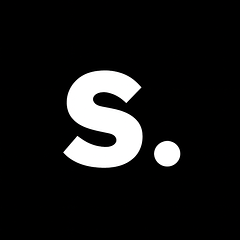
Technical Writer and Content Architect
Subzero LabsAbout Subzero Labs
Subzero Labs is building the next generation of decentralized infrastructure.
Position Overview
We’re looking for a Technical Writer & Content Architect who thinks like a teacher, writes like a developer, and structures like a librarian. You have a deep understanding of constructivist learning theory—especially semantic waves architecture—and a talent for turning complex technical concepts into accessible, well-structured knowledge.
You believe information architecture is a product, documentation is a user experience, and great content is as scalable as any line of code. You're fluent in leveraging AI tools to accelerate and elevate writing workflows, and you know how to balance human nuance with machine speed.
This role is central to how users learn, navigate, and succeed within Subzero Labs.
What You'll Do
Content Architecture & Systems
Design and maintain an intuitive, modular information architecture for Subzero Labs technical documentation.
Define content models, taxonomy, and structure that scale with the complexity of our platform.
Implement structured writing standards that make docs easy to read, easy to find, and easy to maintain.
Pedagogically-Informed Writing
Apply constructivist learning principles and semantic wave design to create content that helps users build from foundational to expert-level knowledge.
Author tutorials, conceptual explainers, API documentation, and walkthroughs that oscillate between abstract and applied understanding.
Collaborate with engineers and product leads to ensure technical accuracy while preserving pedagogical clarity.
AI-Augmented Workflows
Use LLMs and AI tools (like ChatGPT, Claude, GitHub Copilot) to speed up drafting, refactoring, and information extraction—without compromising quality.
Create AI-assisted templates and prompts to improve consistency, reuse, and scalability in content production.
Evaluate and refine AI integrations for documentation workflows.
Cross-Functional Enablement
Work with Subzero Labs engineers, product managers, and community leads to identify content gaps, design learning experiences, and improve developer success.
Support internal knowledge management efforts—documenting processes, decision logs, and technical artifacts.
Build bridges between content, education, and product design.
Required Qualifications
Deep familiarity with constructivist pedagogy and learning design principles (bonus if you’ve applied semantic waves in practice).
Experience architecting or scaling technical documentation systems.
Excellent writing and editing skills—clarity, tone, and structure are non-negotiables.
Fluency with AI tools and a mindset for using them to augment human creativity and productivity.
Ability to translate complex systems into accessible, structured, and actionable content.
Comfort collaborating across technical, educational, and design functions.
Knowledge of web3 technologies and architectures.
Bonus Points
Prior experience writing developer documentation, tutorials, or conceptual guides for Web3, APIs, or distributed systems.
Familiarity with Markdown, Git-based documentation workflows, GitBook, Docusaurus, or similar platforms.
Background in instructional design, UX writing, or curriculum development.
Knowledge of open-source community norms or experience working in developer-focused organizations.
Sufficient software engineering know-how to run, test, and author example code.